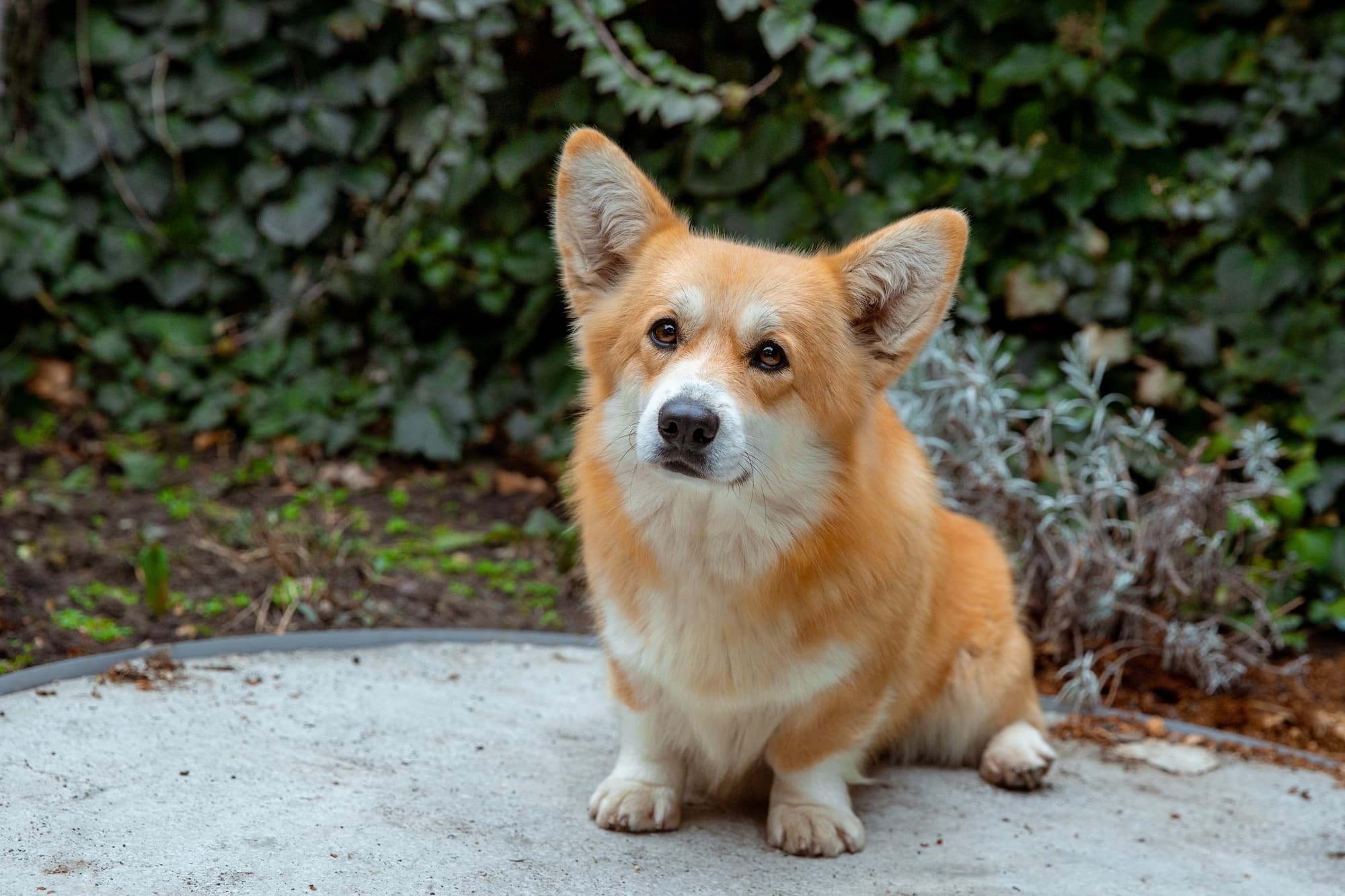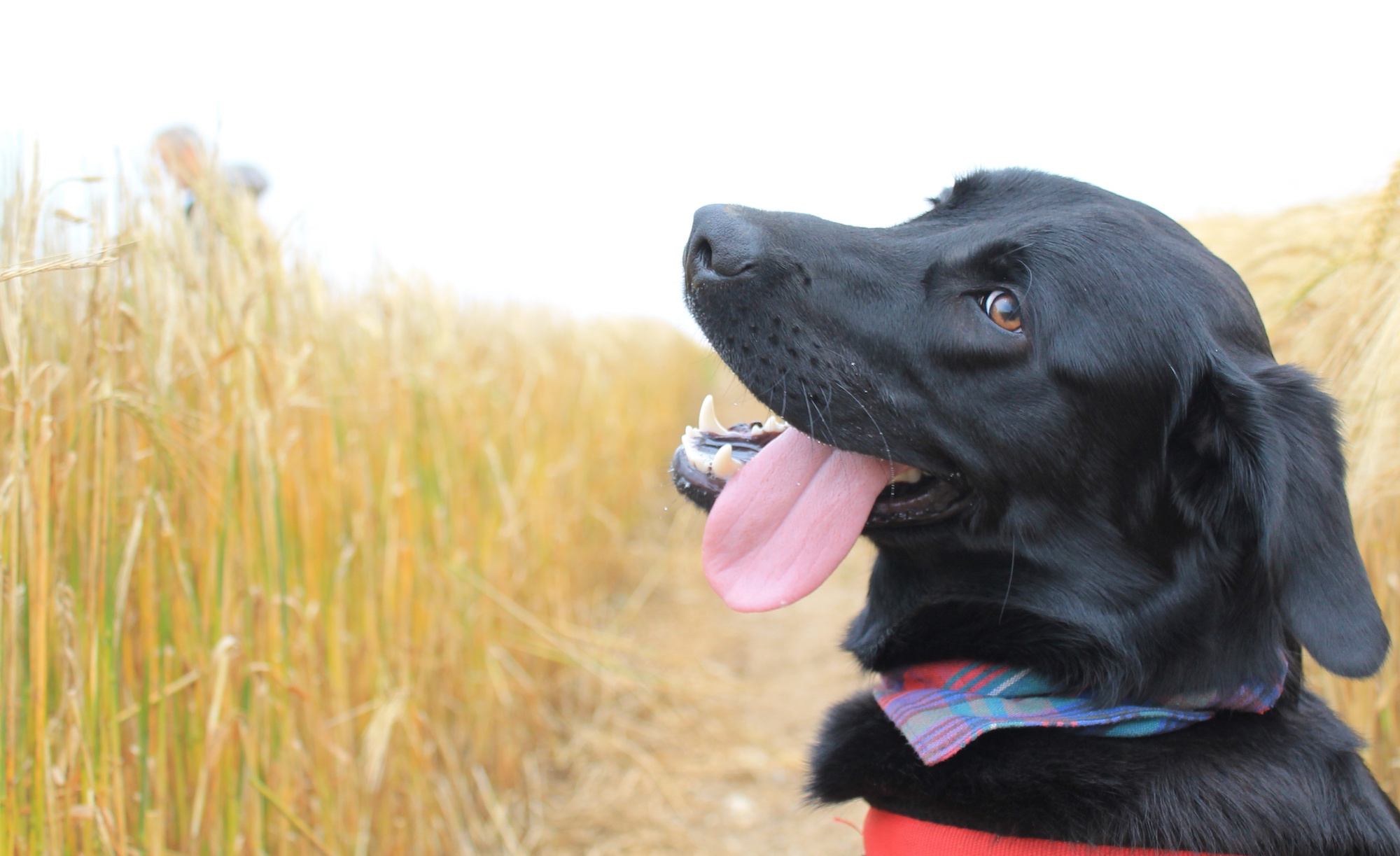- Growing puppies require more calories, fat, protein, and essential nutrients per pound than older dogs.
- High-quality, balanced food that provides the right ratios of nutrients, and supplies healthy fats, is key!
- 1-6 weeks: Puppies should be fed by their mother for the first four weeks. At four weeks, you can start introducing soft food.
- 6 weeks to 6 months: Feed your pup three to four times a day. Be sure to feed a diet that’s made to fuel puppies’ growth and development.
- 6 months and up: transition to once or twice-daily feeding and stick with this schedule.
- Be careful not to over-feed. Too-rapid weight gain and growth can cause skeletal problems, and contribute to obesity.
- Weight management is important, even for puppies. It’s important to know the right amount of calories your pup should eat. Don’t rely on “scoops.” A fresh food plan makes it easy to feed the right amount, and to adapt as your puppy grows.
When it comes to feeding a puppy, there’s no shortage of answers, advice, products, and promises aimed at new dog owners. While some of it is more marketing than substance, puppies do have different dietary needs than adult dogs, and healthy food, served in the right amount, is essential for your growing pup. It’s important to familiarize yourself with some of the basics, so we provided answers to the big questions here.
What should puppies eat?
Growing puppies require more calories, fat, protein, and essential nutrients per pound than older dogs. At this important stage, when your puppy’s bones, brain, and other organs are developing, it’s important to pay attention to the quality of their nutrition, and how, when, and how much you’re feeding.
What to feed your puppy: 1-6 weeks
For the first four weeks of their life, at least, your pup will ideally be with their mother and get their nutrients from mother’s milk, which provides the best source of nutrition and provides antibodies to help ward off disease. They should be completely weaned as of eight weeks.
Puppies can be offered what’s known as gruel to stimulate food intake starting at three or four weeks of age. Gruels can be made by blending a moist food that’s designed for puppies with an equal volume of warm water. Puppies should be encouraged to lap the gruel or owners can dip their fingertips in the gruel and then into the puppy’s mouth. As the puppy’s interest in solid food increases, the water content of the gruel can be reduced progressively. Puppies should be eating sufficient quantities of solid food at five to six weeks of age.
What to feed your puppy: six weeks to 6 months
First, make sure you’re feeding a diet that’s formulated for puppies or for all life stages.
As with feeding any dog, when it comes to nourishing a young pup, one size does not fit all. And balance is key. While it’s important to provide sufficient nutrients to a puppy’s growing body, providing an overabundance of nutrients, and food, can do them harm.
Too-rapid weight gain and growth, especially in giant breeds, can cause skeletal problems. Energy density and calcium warrant especially close attention. Calcium and phosphorus are naturally occurring substances that we, and dogs, need to get from the foods we eat. Together, they are responsible for a host of critical bodily functions (including, but going far beyond, building healthy bones and teeth). It’s especially important for puppies’ food to have these elements in the right amount individually and in the proper ratio. Too little calcium can cause skeletal demineralization; too much calcium and phosphorus interferes with bone growth. Canine hip dysplasia, osteochondrosis, osteochondritis dissecans (OCD) and elbow dysplasia are joint diseases that can affect young, large-breed, rapidly growing dogs and are linked to over-feeding and excess dietary energy and calcium.
Your puppy’s diet should provide calcium and phosphorus in a ratio of 1:1 up to 2:1, but the lower end of that range is best. There are other vitamins, like vitamin D and A, and copper, magnesium, and zinc that are important for healthy bone development.
The healthy fat factor
It’s also important to incorporate the right kind, and ratio, of healthy fats into your puppy’s diet. Omega-3 and Omega-6 are long-chain fatty acids known as essential fatty acids because dogs cannot synthesize them, so they need to get them from the foods they eat. Omega-6 fatty acids include arachidonic acid, and linoleic acid. Omega-3 fatty acids include alpha-linolenic acid, docosahexaenoic acid (DHA), and eicosapentaenoic acid (EPA).
Together, and in the right balance, these fats are vital in a range of bodily functions including immunity, brain and eye development, and skin, coat, and joint health, and they work synchronously to control inflammation. In simplest terms, Omega-6s trigger hormones that promote inflammation (which is useful in fighting illness and infection) and Omega-3s are associated with controlling or reducing inflammation. Omega-6s come from things like safflower oil, sunflower oil, corn oil, poultry, eggs, corn oil, and walnuts. Omega-3s are derived from cold-water fish like sardine, anchovies, and salmon. One is not inherently bad, but many highly processed pet foods are especially high in Omega-6s, creating an imbalance. And as with all things food-related, balance is everything.
Your puppy’s food should contain DHA as it’s important to brain and eye development in young puppies. The best sources of DHA include high-quality fish oil, or whole anchovies or sardines. DHA is a particularly important element for a growing pup. A 2006 study by the College of Veterinary Medicine at Texas A&M, found DHA can improve memory or learning in young dogs.
Providing the necessary nutrients in the right ratios isn’t easy with home cooking, which is why veterinarians recommend a complete and balanced growth diet. But many highly processed foods can claim to be “complete and balanced” and be less than ideal to fuel a puppy’s growth and health. We recommend fresh, gently cooked food, which provides all the necessary nutrients in the right amounts, and which can be easily digested by your puppy. Fresh food from The Farmer’s Dog is clinically proven to be highly digestible and palatable.
How much should you feed your puppy?
When we think of puppies, it’s hard not to conjure a roly-poly bundle of joy. Along with the baby smell, puppies have that adorable baby softness that can create the impression that it’s OK for a puppy to be chunky. But managing your dog’s weight is critical, and that starts when they’re a puppy. Obesity is a huge health threat to dogs of every age, and it’s linked with a long list of diseases. Starting your puppy off right by establishing exactly how much they should be eating every day, and maintaining a lean body condition, are among the most important things you’ll do for the health of your dog.
Get the calories right
Take the time to formulate a feeding plan that’s right for your puppy based on their breed, adult size, body condition, and optimal weight and growth rate. It’s essential to establish how many calories your dog should eat daily. There’s too much room for error when you rely on the guidelines on kibble bags that give portions in “cups” or “scoops” according to relatively broad weight ranges. Those guidelines are too vague to take into account the different needs of dogs who are lumped together into the broad weight ranges on kibble bags. They don’t factor in body condition, which is important—a dog who is 20 pounds and overweight should be fed differently than a 20-pound dog who is active and at an ideal weight or underweight. Pet food manufacturers tend to overestimate the amount of food required, so many dog owners end up overfeeding.
For a rough guide to how many daily calories your dog should consume, there are charts that are available from resources like The Association for Pet Obesity Prevention (APOP). Start by establishing your puppy’s predicted adult weight. Then determine the number of calories that you should be feeding your dog based on that weight. Once your puppy reaches five months of age, if they are in a good body condition you do not need to increase the food since the peak calorie consumption should be at about five months.
Remember that determining a calorie range this way is just a starting place. Every dog is unique, so be sure to consult your vet about how much food is ideal for your dog. And monitor your dog’s body condition over time to make sure that calorie range is right for your dog’s activity level, and size.
One easy way to establish the right caloric intake is to sign up for a fresh food plan. This method takes the guesswork out of the process, and allows you to provide your puppy’s weight, size, breed, activity level, and other individual factors to determine daily calories, and receive a customized, correctly portioned plan. Puppy owners should, in consultation with their veterinarian, monitor their pup’s body condition and adjust diet to ensure that ideal body weight is maintained during the growth phase. A fresh food plan makes it easy to update dietary needs throughout your puppy’s life.
Keeping track of body condition
A puppy’s body weight often doubles by eight to 10 days after birth. Between one and two months of age, their average daily weight gain will be around three grams/kg.
If, like most people, you don’t have access to a puppy scale, you can keep an eye on your dog’s weight by sight and touch. The same kind of look-and-touch tests that apply to adult dogs can be used on your wee one (read more about measuring body condition here).
Before four months, your puppy may not have a defined waist, and may have a rounder belly, and other marks of a healthy, fast-growing pup. A puppy’s body weight often doubles by eight to 10 days after birth. Between one and two months of age, their average daily weight gain will be around three grams/kg.
After four months, you can begin keeping track of their body condition using the same standards you’d apply to an adult dog. Examine your puppy from the side and feel their midsection: while ribs should not be visible, you should be able to feel them under a bit of padding. They should have a visible “waistline” instead of a barrel shape.
Keep an eye on weight and check in with your veterinarian to assess your pup’s body condition and determine any necessary adjustments to feeding amount and schedule. Consult a body condition score chart to determine if you’re on the right track (you can find one here).
How often should you feed your puppy?
6 weeks to 6 months
The short answer: feed three to four times a day.
The longer answer:
There are different schools of thought on frequency of feeding for very young pups among veterinary nutrition experts. Some experts say it’s OK to let your puppy eat as much as they want for the first four months and leave food out to allow the puppy to graze. However, this type of feeding can predispose the dog to obesity and in large breeds, induce skeletal deformities at a young age.
We think it’s a good idea to structure meal size and time— feed a correctly portioned amount of food to a young puppy three to four times per day until around 6 months.
These frequent, smaller meals are easier for a puppy to digest, can keep their energy levels steady, and if fed in the right proportion, prevent obesity and skeletal deformities. At this stage, be sure you know what a healthy weight and body condition are and keep track of them. Puppies are growing fast at this time, which is normal, but their metabolism isn’t limitless—they can still gain too much weight. Work with your veterinarian and use the body condition tests mentioned above to ensure your pup is staying lean enough. If you have a large breed dog, feeding them to keep them on the leaner side (that is, a body condition score of 4/9) is highly recommended. The adult size of your dog may be determined by genetics; however, the time it takes for your dog to become “full grown” can be impacted by proper nutrition. Growing at the proper rate means less risk of bone and joint disease. So, exert some control over your dog’s diet and help control their growth.
6 months and up
At this stage, you can feed your puppy once or twice a day, and keep this schedule for their adult years.
Feeding large-breed dogs
While the Association of American Feed Control Officials (AAFCO) defines a large breed as any dog that weighs over 70 pounds when fully grown, generally, a puppy can be considered a large breed if they’ll be between 55 and 100 pounds when fully grown—think Labs, German shepherds, Rottweilers, Bernese mountain dogs. If a dog will weigh over 100 pounds when grown that’s a giant breed, like a Great Dane.
The main thing to keep in mind when feeding a large breed is that they typically take longer to grow. Medium-large dogs can take about a year to a year-and-a-half to reach adulthood, and larger breeds won’t stop growing until they’re two years old. It’s important that larger dogs grow at a healthy rate—growing too fast can cause orthopedic diseases and obesity. Avoid free-feeding a large breed puppy. Puppies do not practice portion control so free-feeding or ad-lib feeding is not advised. With the help of your veterinarian, calculate the total amount of food your dog should consume in a 24-hour period and divide it into two portions. Or, sign up for a customized plan that will provide pre-portioned food that’s appropriate for a growing pup.
While it might be tempting to fuel all that growth with supplements, it’s especially important to maintain the right nutrient balance with large pups, especially calcium, phosphorus, and vitamin D—too much of which can cause serious health issues.
Read more about feeding a large breed puppy here.
Feeding small-breed dogs
Small breed dogs are those who will be 30 pounds and under when full grown; tiny breeds are those who will remain 10 pounds and under when full grown. These dogs reach maturity faster, between about nine to 12 months.
Small dogs have a faster metabolism than large dogs, which means they may do better with smaller, more frequent meals.
Again, from about six weeks to six months, it’s recommended that puppies be fed three to four times per day. From then on, you can switch them to a twice-daily feeding schedule. If they’re active, or are always clamoring for food between meals, you can consider switching back to feeding their allotted food in 3 or 4 smaller daily meals.
Tiny breed dogs can be prone to hypoglycemia (low blood sugar), so it’s sometimes suggested that you should leave food out all day for them to graze. However, many experts (including us!) recommend that you stick to three to four small meals a day.
Read more about feeding a small breed puppy here.
Treats
Be especially careful with treats—with your pint-sized pup, or any pup. Treats should make up no more than 10% of your dog’s daily intake, which means, for a small dog weighing seven pounds and requiring only 250 calories a day, they should only get 25 calories a day in treats. If you’re not keeping track you can very quickly double their daily calories with a few high-calorie treats! Opt for healthy options like green beans, and blueberries, and even then, keep them to a minimum so you’re not throwing off the nutritional balance of their food.
Read more about puppy care in our Puppy Guide.
Pet health is an important topic. That’s why The Farmer’s Dog editorial team carefully vets and reviews every piece of content we publish. We deliver evidence-based advice and medically reviewed facts that focus on pet nutrition, health, and well-being. The mission of this site is to help people provide the best care possible for their dogs by publishing only trustworthy, accurate, and timely health information from a group of passionate experts.
This article was vetted by a vet (and board-certified veterinary nutritionist).
Reviewed by Beth Hamper, DVM, PhD, DACVN.
Photo by Berkay Gumustekin on Unsplash.




